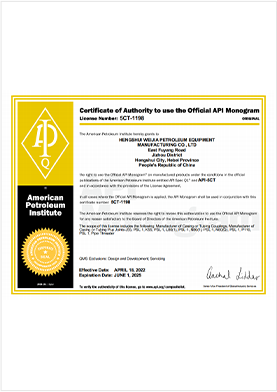- Afrikaans
- Albanian
- Amharic
- Arabic
- Armenian
- Azerbaijani
- Basque
- Belarusian
- Bengali
- Bosnian
- Bulgarian
- Catalan
- Cebuano
- Corsican
- Croatian
- Czech
- Danish
- Dutch
- English
- Esperanto
- Estonian
- Finnish
- French
- Frisian
- Galician
- Georgian
- German
- Greek
- Gujarati
- Haitian Creole
- hausa
- hawaiian
- Hebrew
- Hindi
- Miao
- Hungarian
- Icelandic
- igbo
- Indonesian
- irish
- Italian
- Japanese
- Javanese
- Kannada
- kazakh
- Khmer
- Rwandese
- Korean
- Kurdish
- Kyrgyz
- Lao
- Latin
- Latvian
- Lithuanian
- Luxembourgish
- Macedonian
- Malgashi
- Malay
- Malayalam
- Maltese
- Maori
- Marathi
- Mongolian
- Myanmar
- Nepali
- Norwegian
- Norwegian
- Occitan
- Pashto
- Persian
- Polish
- Portuguese
- Punjabi
- Romanian
- Russian
- Samoan
- Scottish Gaelic
- Serbian
- Sesotho
- Shona
- Sindhi
- Sinhala
- Slovak
- Slovenian
- Somali
- Spanish
- Sundanese
- Swahili
- Swedish
- Tagalog
- Tajik
- Tamil
- Tatar
- Telugu
- Thai
- Turkish
- Turkmen
- Ukrainian
- Urdu
- Uighur
- Uzbek
- Vietnamese
- Welsh
- Bantu
- Yiddish
- Yoruba
- Zulu
Bull Plug Pipe Layout - Efficient Solutions for Piping Systems
Understanding Bull Plug Pipe Layout A Comprehensive Overview
The bull plug pipe layout is a significant component in modern piping systems, particularly in industrial applications. This layout involves the strategic arrangement of bull plugs within a piping network, which serves essential functions in fluid control, pressure management, and system maintenance.
What is a Bull Plug?
A bull plug is a specialized fitting used to seal the end of a pipe or fitting. Unlike standard plugs, bull plugs typically feature a tapered design that allows them to create a tight seal, preventing leaks and ensuring the integrity of the piping system. They are available in various sizes and materials, suited for different types of pipes, such as PVC, steel, and copper.
Importance of Bull Plug Pipe Layout
1. Maintenance and Access One of the primary reasons for incorporating bull plugs into pipe layouts is to facilitate maintenance. Bull plugs allow technicians easy access to the piping system for repairs or inspections without the need to dismantle extensive sections of the pipe. This access can save considerable time and reduce labor costs.
2. Pressure Management In high-pressure systems, bull plugs help control and manage pressure fluctuations. By sealing off portions of the system during maintenance or testing, technicians can isolate sections of pipe to prevent pressure loss or gain. This ensures that operations can continue smoothly, enhancing the system's overall efficiency.
3. Fluid Control Bull plugs play a critical role in fluid control within piping systems. By creating a secure seal, these fittings prevent leaks, contamination, or ingress of unwanted substances into the system. This is particularly important in industries such as oil and gas, pharmaceuticals, and food processing, where purity and safety standards are paramount.
bull plug pipe layout

4. Design and Configuration The layout of bull plugs in a piping system must be carefully designed to ensure optimal performance. This includes determining the location of the plugs based on flow dynamics, maintenance schedules, and operational requirements. A well-planned layout accounts for ease of access and minimizes disruptions during maintenance activities.
Best Practices for Bull Plug Pipe Layout
1. Strategic Placement Identify critical points in the system where maintenance is likely to occur. Position bull plugs at intervals that allow for easy access without compromising the efficiency of the system.
2. Material Selection Choose bull plugs made from materials that are compatible with the fluids being transported. Consider factors such as temperature, pressure, and chemical exposure to ensure long-term reliability.
3. Regular Inspections Regularly inspect and maintain bull plugs to ensure they remain effective in sealing and isolating sections of the piping system. Replace any damaged or worn plugs promptly to prevent leaks or failures.
4. Documentation Maintain clear documentation of the bull plug layout, including specifications and placement. This documentation aids in maintenance planning and helps new technicians understand the system configuration.
Conclusion
The bull plug pipe layout is an essential aspect of modern piping systems that contributes significantly to efficiency, safety, and maintenance. By understanding the role of bull plugs and implementing best practices in their layout, industrial operations can enhance productivity while reducing downtime and costs. As industries continue to evolve, the importance of effective piping layouts, including bull plugs, will only grow, underscoring the need for ongoing education and adherence to industry standards.
-
Tubing Pup Joints: Essential Components for Oil and Gas OperationsNewsJul.10,2025
-
Pup Joints: Essential Components for Reliable Drilling OperationsNewsJul.10,2025
-
Pipe Couplings: Connecting Your World EfficientlyNewsJul.10,2025
-
Mastering Oilfield Operations with Quality Tubing and CasingNewsJul.10,2025
-
High-Quality Casing Couplings for Every NeedNewsJul.10,2025
-
Boost Your Drilling Efficiency with Premium Crossover Tools & Seating NipplesNewsJul.10,2025







